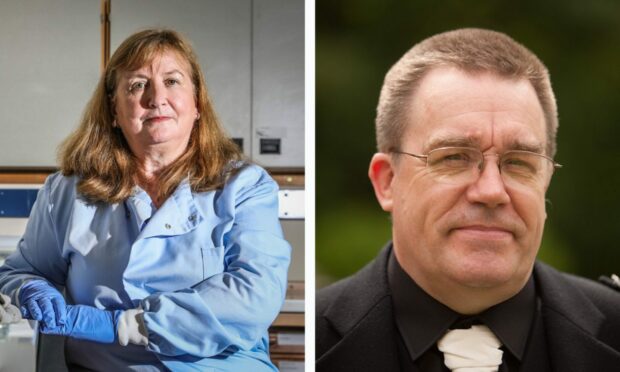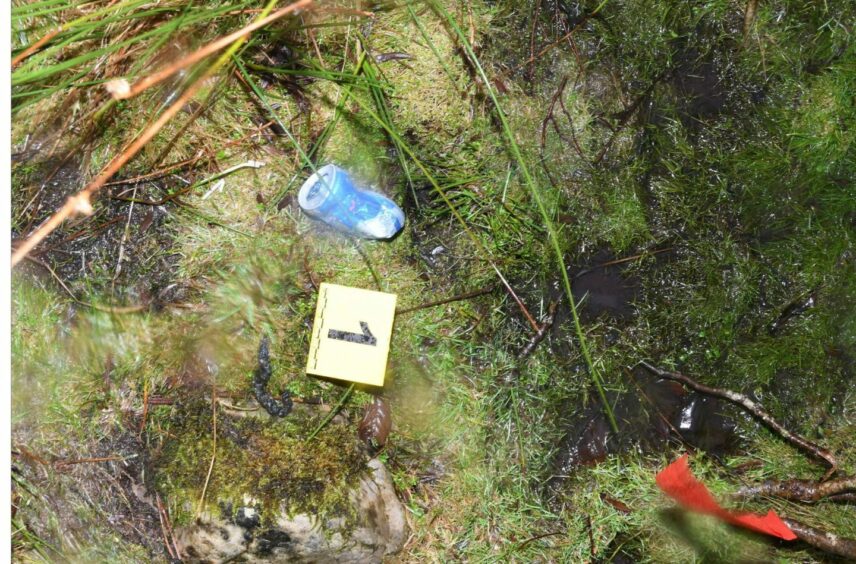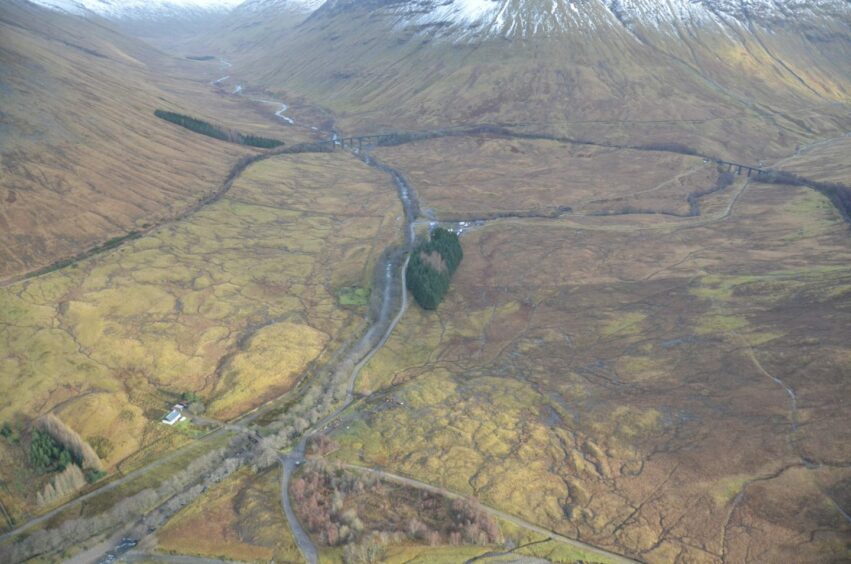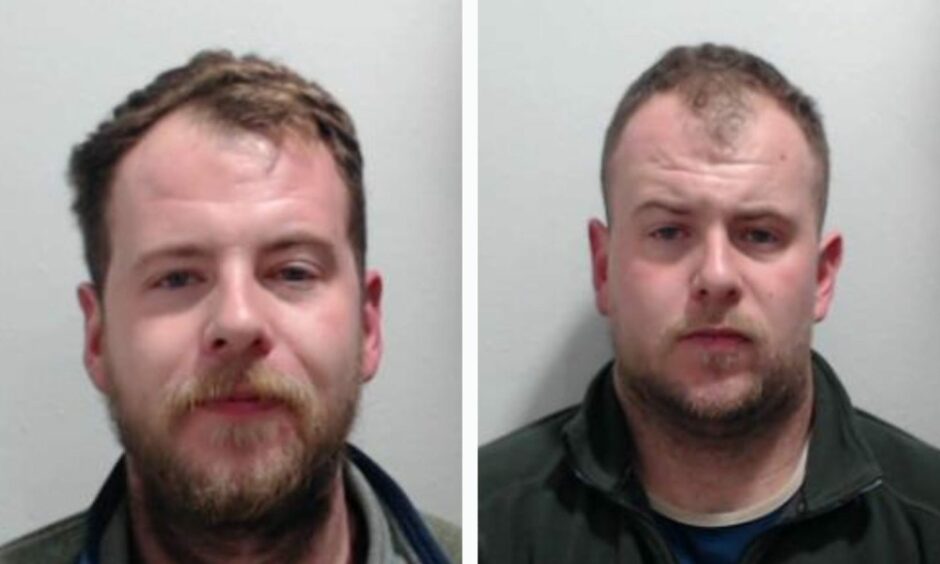An Aberdeen scientist has spoken of the emotional moment that missing charity cyclist Tony Parsons’ body was discovered in a secret grave.
Professor Lorna Dawson – a soil expert at The James Hutton Institute – advised detectives where to dig in order to recover Mr Parsons’ remains.
She told The Press and Journal it was “a poignant moment” when rescuers later lifted him onto the stretcher to take his body to the mortuary.
“There was like a frisson,” the professor explained. “Everyone stood respectfully with their heads bowed and looked at Mr Parsons like when the Queen went past in her coffin.”
The 63-year-old was killed by drink-driver Alexander McKellar, who struck the former naval officer and was helped by his twin brother Robert to bury the man’s body.
But the 31-year-olds’ dark secret was eventually exposed by Alexander’s new girlfriend, who heard his confession and marked the burial site with a Red Bull can when she was taken to it.
Mr Parsons had been cycling on the A82 from Fort William back to his home in Tillicoultry, Clackmannanshire, as part of a 100-mile fundraising challenge.
Despite fighting a prostate cancer diagnosis in 2010, the fatal injuries he suffered on September 29 2017 were too big a battle for him to overcome.
Mr Parsons initially survived the impact but the McKellar brothers didn’t bother to call for an ambulance, although one would not have arrived in time to save his life – the High Court in Glasgow was told.
Instead, he lay hidden underground and undiscovered on the isolated Auch Estate at Bridge of Orchy, Argyll and Bute, for more than three years as his family worried about his whereabouts.
Police took over hotel to support search for truth
New hope came to Police Scotland’s long-running missing person inquiry when Alexander McKellar’s lover reported the shocking revelation of his confession to detectives and a search of the site began on December 30 2020.
The tip-off sparked a major crime investigation in the middle of a Covid-19 lockdown, which required a large team of forensic experts including a soil scientist, a couple of archaeologists, and an anthropologist.
Prof Dawson revealed that The Crianlarich Hotel became a hive of activity to support the potential recovery operation.
“Police had to arrange a hotel and bring in staff to open it for everyone that was coming along,” she said.
“Because of Covid, no shops or anything were open. They brought in staff to look after us at the accommodation for all the police, search teams, and forensic scientists.”
When the Aberdeen-based soil expert arrived at the location marked with the Red Bull can, she was very quickly convinced that the new information might lead to a grim discovery.
The location was a spot on the 9,000-acre estate where Alexander – a deer stalker known as Sandy – lived and worked with his family.
It had been used by the deer shooting estate as an animal pit used to dispose of dead animals.
“I looked at the vegetation and there was an area of about 3m by 2m where there was none of the vegetation that was normally found in that area.
“I did concur that this was a site that had recently been dug up so it was worth investigating that,” she said.
‘Tough conditions’ and ‘mixed emotions
The forensic team began removing 50cm by 50cm squares of the area into buckets which were emptied through sieves to detect any potential trace evidence.
They battled “tough conditions” in the middle of winter to carry out the work.
“There were days it was freezing, days it was absolutely bucketing with rain, it was snowing, the ground was frozen.
“It was very tough conditions to work in that environment and indeed extremely upsetting.”
On the second day of the dig, the team uncovered red fabric like the kind used to make the outer garment of clothing that Mr Parsons had been wearing when he vanished.
Professor Dawson described feeling “mixed emotions” about the significant development.
“I was very saddened that this seemed to fit with the missing person,” she said. “It was also awful that someone could be laid beside animal remains – a total disrespect for Mr Parsons; a loving human being.
“It was very sad that in the middle of this remote moorland he should be left there.”
Tony Parsons was dumped in a pit with dead animals
Animals’ bones were found covering part of Mr Parsons’ body, which had been preserved by the type of environment in which he was buried.
The professor said: “His remains were virtually as they were the day that he died. There was very little decomposition so his remains were as intact as they could be”.
She described a feeling of relief at being able to provide Mr Parson’s family with some sense of closure and recalled thinking at the time: “He’s going home now”.
Soil, vegetation, and bits of wood from the dig were transported back to The James Hutton Institute’s facilities in Aberdeen for further analysis and examination.
Professor Dawson revealed: “It showed that the vegetation that was found adjacent to Mr Parsons’ body could not have come from where he was found and it could not have come from the roadside.
“This was material that was absolutely certainly from the area around the farmhouse and farmyard.
“We found woodchips next to his body which matched the woodchips that were found in the biomass boiler at the farm.
“So his body must have been in contact with material at and around the farmhouse before he’d been put into his ultimate burial location on the hillside in the peat.”
Both McKellars had been due to stand trial accused of murdering Mr Parsons.
But on Wednesday, Alexander McKellar pled guilty at the High Court in Glasgow to the reduced charge of culpable homicide.
His brother Robert had his not-guilty plea to the murder charge accepted.
Along with Alexander, he instead admitted to a charge of attempting to defeat the ends of justice.
They were remanded in custody and are due to be sentenced by judge Lord Armstrong next month.
For all the latest court cases in Inverness as well as crime and breaking incidents, join our new Facebook group.



